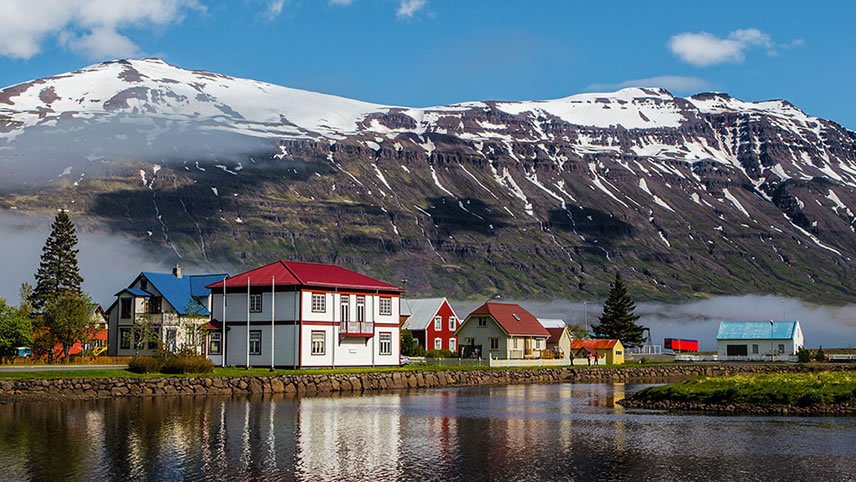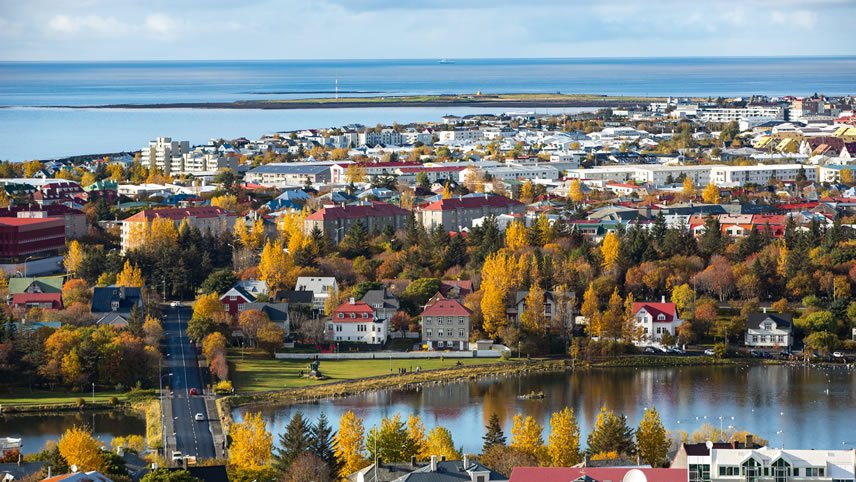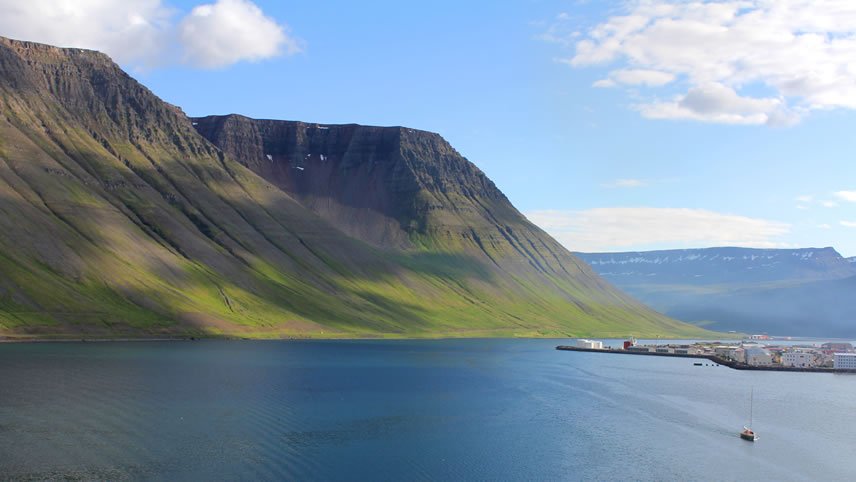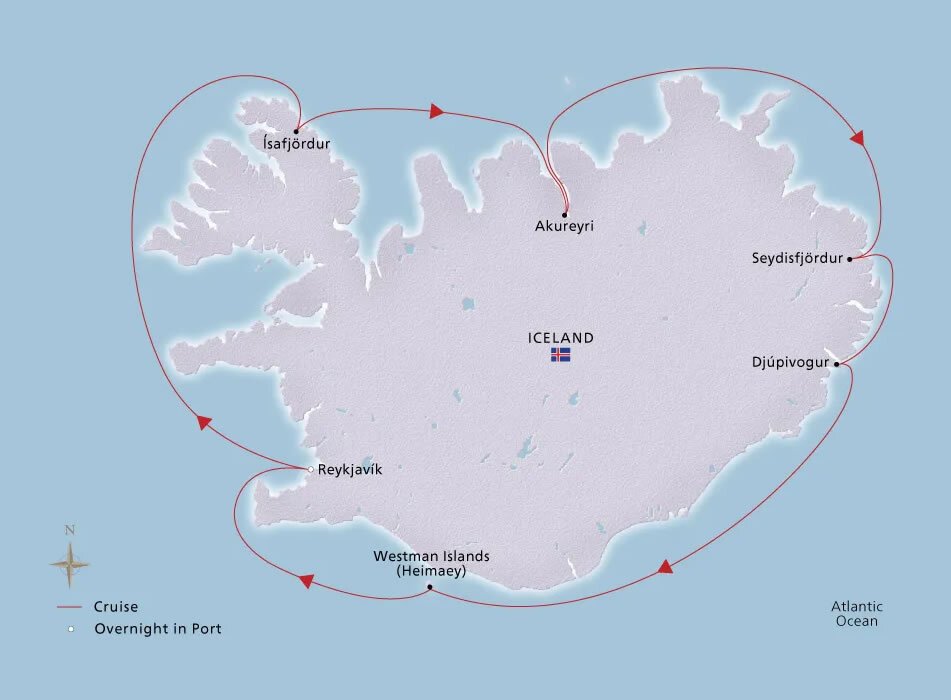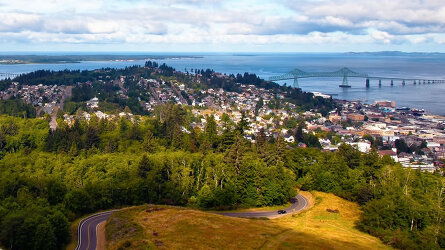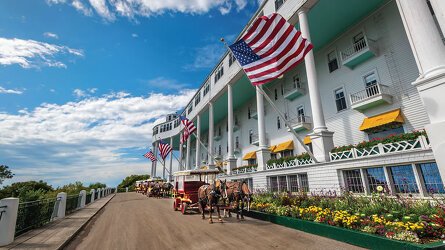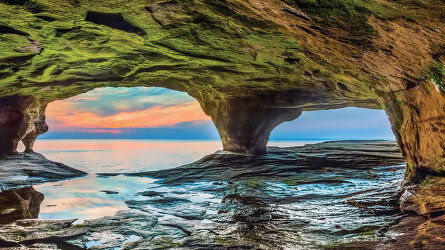Overview
Itinerary
Embark your ship and settle into your stateroom. Reykjavík is the world's northernmost capital city yet captures the distinctive feel of a fishing village. The Kentucky-sized island is Europe's westernmost nation and one of the wildest places on earth. It is also lauded as one of the cleanest and most civilized countries, committed to finding the perfect balance between day-to-day living and harnessing its natural resources with eco-friendly practices. Vikings landed on this pristine land during the 9th century; their arrival is well chronicled in the medieval Sagas preserved at the Culture House.
Reykjavík is home to endless charms, watched over by the majestic Esja mountain range. The striking Hallgrímskirkja church stands in the city center as a towering vision in white, while the glass Harpa concert hall is a wonder of modern architecture. Höfði House is one of Reykjavík's highlights and is the site of the meeting between Ronald Reagan and Mikhail Gorbachev, which marked the beginning of the end of the Cold War. Farther afield, breathtaking natural sites are in abundance, from towering waterfalls and soaring mountains, to blue thermal springs.
ĺsafjördur was founded in the 9th century by the Viking Helgi Magri Hrólfsson. Foreign merchants arrived in the 16th century and set up trading posts here. Today, ĺsafjördur is home to one of the largest fisheries in Iceland and, despite its remote locale, boasts a cultural scene rich in music and drama. The oldest house in Iceland is here, built in 1734, as is the country's largest concentration of old timber-frame homes. Many visitors explore farther afield, delving into the surrounding wilderness of Hornstrandir or discover the fishing heritage of charming coastal towns.
Nicknamed the “Capital of the North,” Akureyri is set at the end of the Eyjafjördur and enjoys a mild climate, unusual for a northern city just 62 miles from the Arctic Circle. Folk culture is robust in Akureyri; the Vefarinn dance was invented here to celebrate the harvest. Other points of pride include the Public Park and Botanic Garden, where some 2,000 plant species grow, and the hilltop Akureyrarkirkja, the local church that is home to a stained glass window from Coventry Cathedral in England.
Seydisfjördur enjoys a mountainous setting at the end of a fjord. It traces its origins to the early days of Viking settlements. Though the town is tiny, it boasts an impressive history. It hosted the world's first modern whaling station and pioneered international communications when it welcomed the first telegraph cable, linking Iceland to Europe. Colorful wooden homes line the streets, overseen by starkly picturesque slopes and the soaring summits of Mounts Bjólfur and Strandartindur.
Djúpivogur lies on Iceland's east coast and has been a trading center since the 16th century. The town is presided over by the towering Búlandstindur; a mountain famed in local folklore for its ability to grant wishes during the summer solstice. Dotted around the town, several cultural sights can be explored, including The Tank and the Eggs of Merry Bay. Residents here favor embracing a slower pace of life. The town has adopted the cultural trend known as “Cittaslow” which is dedicated to the promotion of sustainable living, improving the quality of life for its residents.
Heimaey is the only populated island in the Westman Islands. The scenery is stunning with its volcanic landscapes, moss-covered clifftops and picturesque homes with brightly colored rooftops. A number of breathtaking natural sights are a result of the volcanic eruption that took place here in 1973, which saw the evacuation of all 5,000 residents to the mainland. Each summer, millions of puffins pay a visit and countless other species migrate here to feed and breed. Several efforts are underway to protect the wealth of wildlife, from puffins to the gentle giants of the sea.
Iceland is filled with geological wonders and the surrounding areas around Reykjavík are famed for their spellbinding vistas. The country is divided by the Mid-Atlantic Ridge; Iceland is the only place in the world where this rift sits above sea level. The North American and Eurasian tectonic plates in Thingvellir National Park are clearly visible. Deep ravines, filled with the meltwaters from the Langjökull glacier, are crystal clear, creating a wonderful underwater showcase of fascinating geology to explore. After breakfast, disembark your ship and journey home.
Life Onboard Viking Mars
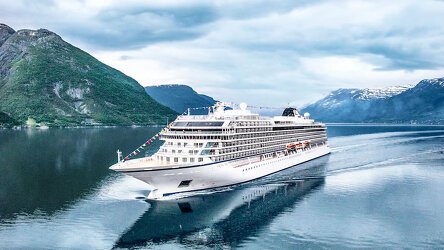
With her maiden voyage in 2022, the Viking Mars is an all-veranda ship, part of Viking's fleet of award winning ships incorporating all the comforts & luxuries you would expect from Viking. Read more
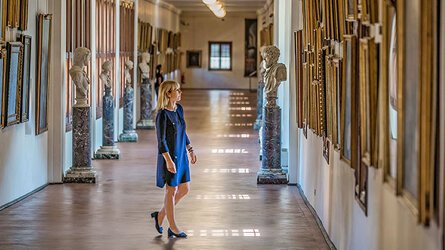
Viking are destination experts. With no casinos or children on board, you can be assured that the focus is firmly on enrichment and education. Read more
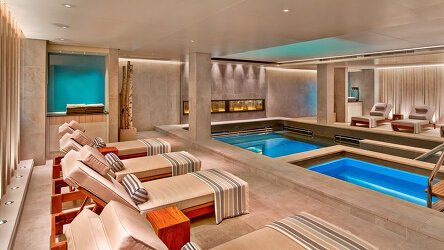
After a day of exploration or just to enhance the relaxation of a day at sea, the on-board Spa will leave you feeling recharged and revitalized. Read more

Viking offer eight on board dining options. Beer, wine and soft drinks are available with lunch and dinner at no additional charge of fee. Read more
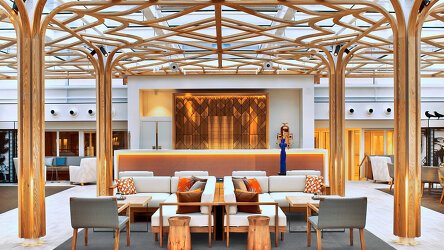
Viking proudly includes all that you need and nothing you do not. A variety of features and services valued at $200 per person per day are standard inclusions in your cruise. Read more
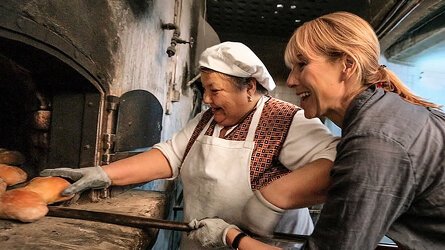
Viking include one complimentary shore excursion in every port of call. Enjoy exclusive entry to cultural treasures and seldom-seen collections around the world. Read more

Viking Mars Reviews (4) Most Recent 'Viking Mars' Reviews
Brochure
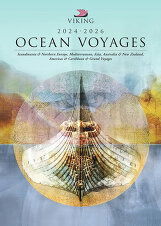
Viking Ocean Cruises (2024-26)
Availability Click on prices below to view cabin upgrades and details
Tour & cruises prices are per person. Prices shown have savings applied, are subject to availability and may be withdrawn at any time without notice. Prices and trip information are correct at the time at this point in time, however are subject to confirmation at the time of booking and are subject to change by Viking. For cruise itineraries, cabin images are sourced from Viking. These should be treated as indicative only. Cabin inclusions, upholsteries and room layout may differ to the image(s) shown depending on the ship selected and your sailing dates.
